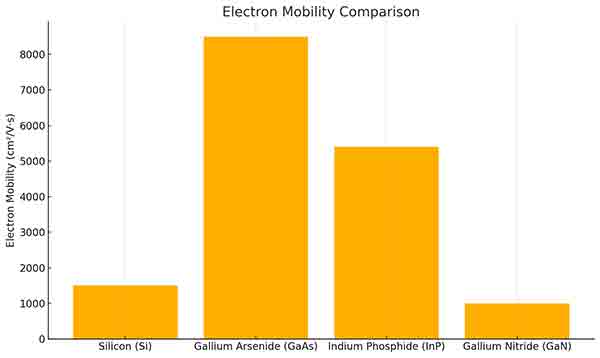Thin Film of GaP Deposited on Glass Wafers
An optical fabrication scientist requested a quote for the following.
I would like to have either quartz or Si wafers coated with 150 to 300 nm GaP. GaP does not necessarily have to be crystalline. It can be amorphous but it has to be pure > 99%.
If in fact you could procure these wafers, I would be willing to buy a batch of 25 (either 4 inch or 6 inch).
It is possible to deposit at least a 100nm thick monocrystalline Epi layer of GaP on a Silicon wafer. Scientific literature reports that this has been done and suggests how to overcome the phase reversal domains (APD) that plague deposition of III-V semiconductors on IV substrates. Although there are many indications that his might be a very useful structure, no supplier that I know of does this on commercial basis.
We do have available facilities to grow a (150-300)nm thick Epi layer of undoped GaP on a 50.8mm or 76.2mm diameter Silicon wafer. However, we have never done this before, so we can only undertake it on "Best Effort" basis. In other words, you would have to pay for the Epi wafers, regardless of the morphology or uniformity of the Epi layer:
We quote:
Item Qty. Description
EX40g. 1 Epi wafers:
ubstrate: 3"Ø×380±25µm p-type Si:B[100-4ºtowards<111>]±0.5°, (5-50)Ohmcm, One-side-polished, back-side Alkaline etched, SEMI Flat (one) EPI Layer: undoped GaP:-, Nc<1E16/cc, 175±25nm thick, acked sealed in single wafer container.
We will be able to quote on a larger number of wafers only after we gain experience with the first three. I expect that, if we are successful, in larger quantities, like 25 wafers.
It is possible to deposit a (0.3 - 1.0)µm thick polycrystalline layer of GaP on a fused quartz substrate, by sputtering.
We have available facilities to deposit, by sputtering, 300nm thick layer of undoped GaP on a 76.2mm diameter fused quartz wafer. However, we have never done this before, so we can only undertake it on "Best Effort" basis. In other words, you would pay for the wafer, regardless of how well the GaP layer adheres to the substrates, how uniform is the thickness of the deposited layer and how smooth is the surface.
We quote:
Item Qty. Description
EX40h. 3 Thin film of polycrystalline undoped GaP Substrate: Fused quartz silica JGS2 wafers, P/P 3"Ø×500±25µm, Both-sides-polished, Ra<1nm rms, 1 Flat 16±2mm long. Thin Film Layer: Polycrystalline undoped GaP:-, 350±50nm thick, Packed in single wafer container, sealed in polyethylene foil.
We will be able to quote on a larger number of wafers only after we gain experience with the first three. I expect that, if we are successful, in larger quantities, like 25 wafers.
We can probably do above described deposition on 4"Ø fused quartz wafers. However, we can only expect a uniform layer of GaP over the inner 3"Ø. The largest GaP sputtering target that we have is 4"Ø.
We do have the facilities to make even a 6"Ø GaP target. That would let us produce a uniform layer of GaP over a 4"Ø area and a layer of decreasing thickness to about 75% of center point value at the periphery of a 6"Ø substrate. However we are not willing to make estimates of such wafer sizes until we have gained the experience with EX40h.
Reference #ONLQ11501 for pricing.
Get Your Silicon Wafer Quote FAST! Or, Buy Online and Start Researching Today!

